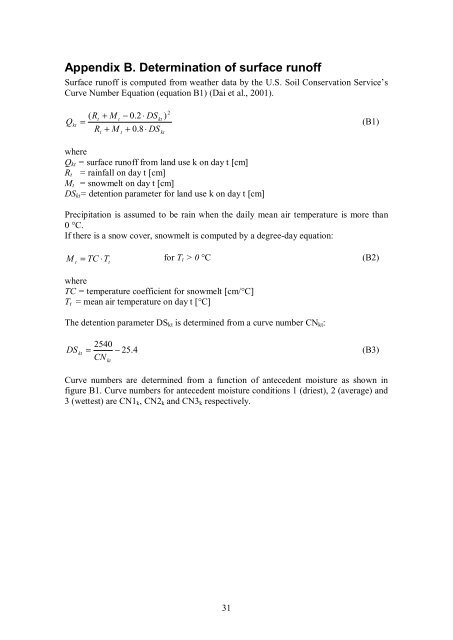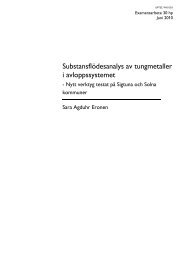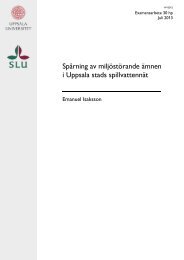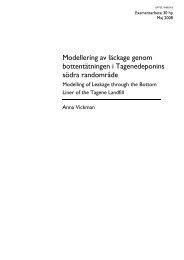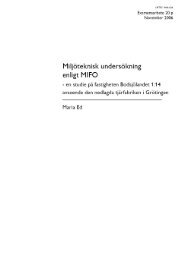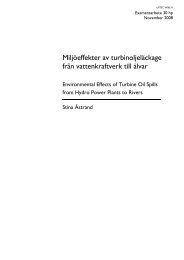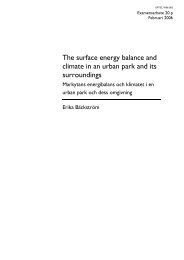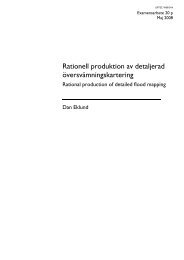Nutrient Transport Modelling in the Daugava River Basin - DiVA Portal
Nutrient Transport Modelling in the Daugava River Basin - DiVA Portal
Nutrient Transport Modelling in the Daugava River Basin - DiVA Portal
Create successful ePaper yourself
Turn your PDF publications into a flip-book with our unique Google optimized e-Paper software.
Appendix B. Determ<strong>in</strong>ation of surface runoffSurface runoff is computed from wea<strong>the</strong>r data by <strong>the</strong> U.S. Soil Conservation Service’sCurve Number Equation (equation B1) (Dai et al., 2001).Qkt( Rt+ Mt− 0.2 ⋅ DSkt)=R + M + 0.8 ⋅ DSttkt2(B1)whereQ kt = surface runoff from land use k on day t [cm]R t = ra<strong>in</strong>fall on day t [cm]M t = snowmelt on day t [cm]DS kt = detention parameter for land use k on day t [cm]Precipitation is assumed to be ra<strong>in</strong> when <strong>the</strong> daily mean air temperature is more than0 °C.If <strong>the</strong>re is a snow cover, snowmelt is computed by a degreeday equation:M= TC ⋅for T t > 0 °C (B2)tT twhereTC = temperature coefficient for snowmelt [cm/°C]T t = mean air temperature on day t [°C]The detention parameter DS kt is determ<strong>in</strong>ed from a curve number CN kt :DSkt2540 − 25.4CN= kt(B3)Curve numbers are determ<strong>in</strong>ed from a function of antecedent moisture as shown <strong>in</strong>figure B1. Curve numbers for antecedent moisture conditions 1 (driest), 2 (average) and3 (wettest) are CN1 k , CN2 k and CN3 k respectively.31


